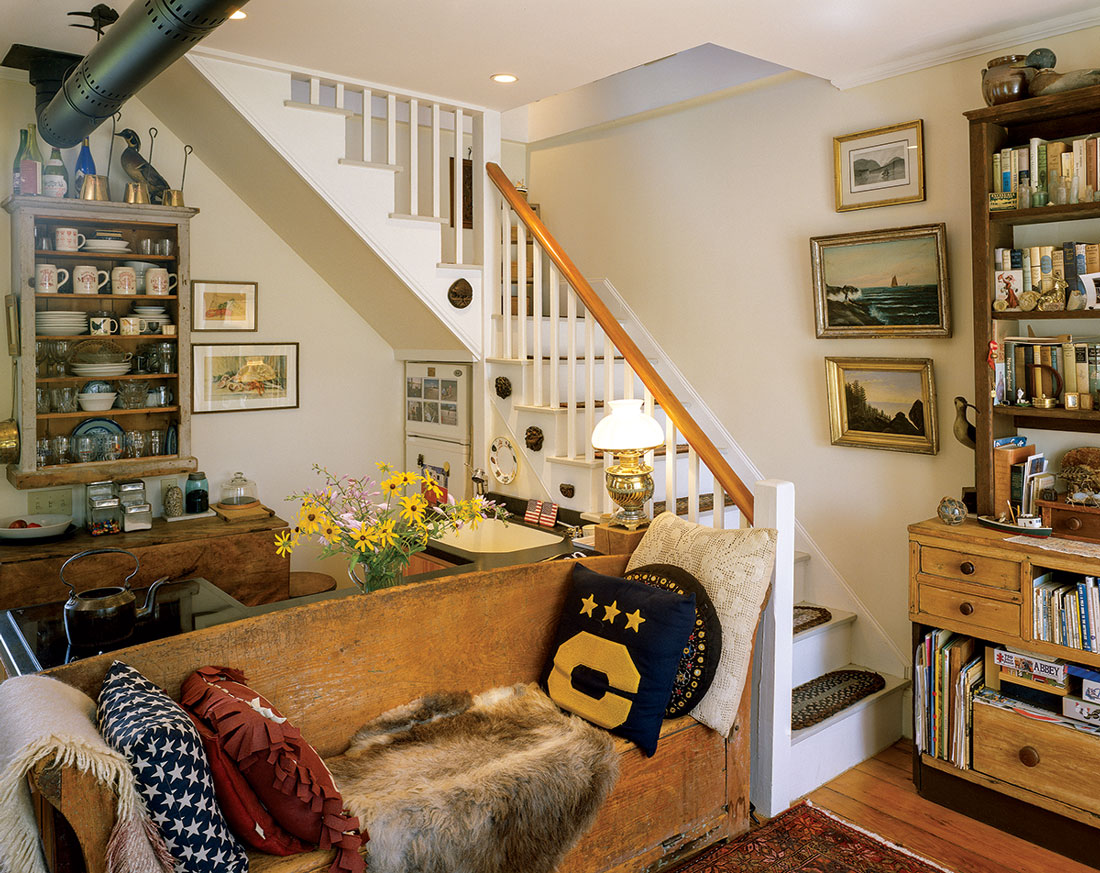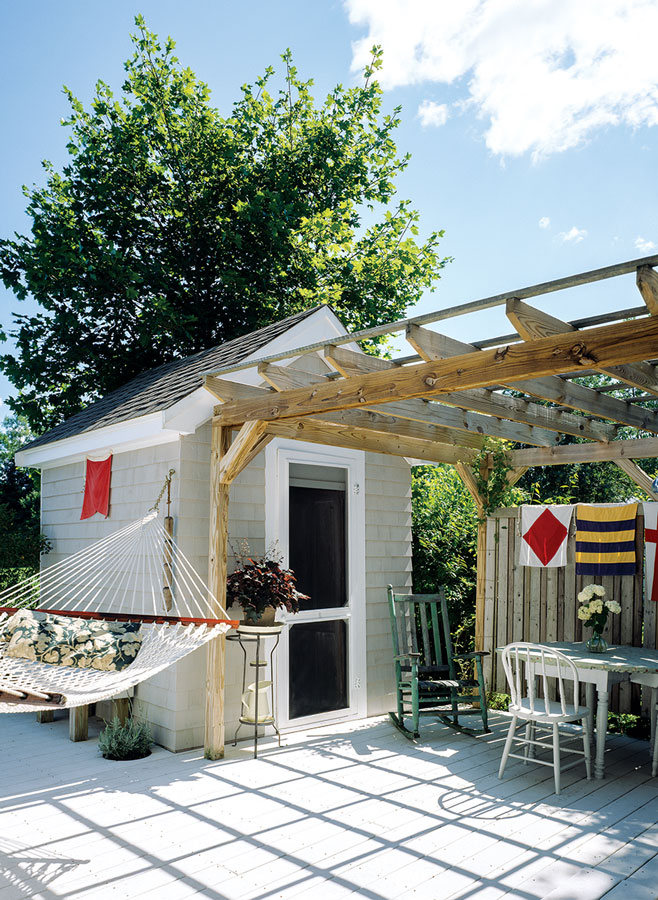The Little House That Could
Once deemed a teardown, this wee Second Empire is now a Round Pond celebrity.

TEXT BY SARA ANNE DONNELLY
PHOTOGRAPHED BY BRIAN VANDEN BRINK
The 300-square-foot mansard-roof house in Round Pond looked like it hadn’t been loved in a lifetime when Tim and Haleen Dieterich stumbled upon it on a drizzly morning in 1972. They were driving home to Whitefield, New Hampshire, after a camping trip, their two young sons and a massive military tent, borrowed from friends, crammed into the back of their tan Gremlin. Spotting the bitty place with the peeling paint and proud “crown” hidden behind tall grass and shrubbery, they pulled over. Peering through the grimy bay window, Tim recalls, “There was a refrigerator in the middle of the room and everything was covered with dirt and dust.” Wow, he thought, this is perfect.
“We wouldn’t have to use the tent anymore!” he told Haleen and the boys. There was no for-sale sign up at the house, and a few incredulous neighbors told them it should just be torn down, but the Dieterichs went door-to-door asking if anyone knew the owner. Finally, a man selling antiques out of his garage said the mansard was his daughter’s and gave them her number. When Haleen called to inquire about a hypothetical price, “She said, ‘Four,’ and she didn’t say anything else. And I thought, ‘Oh my gosh, she means four thousand dollars.’”



ABOVE Rustic antiques, including an early-19th-century French-Canadian “banc lit” bench that converts to a bed platform, dominate the interior. Outside, the Dieterichs added a deck that links the mansard to a shed (pictured) and bunkhouse.
After the sale, the couple worked on the mansard every summer, replacing rotted beams, scraping and refinishing surfaces, putting in a new well, and, after acquiring an upgraded outhouse from a friend, turning the leaky old one into a bunkhouse for the boys (!). Along the way, they learned that the home had probably been built around 1870 as an extension on a farmhouse by architect Reuben Brown, who used it as his office and a model of the mansard-roof Second Empire style, a recent export from France he hoped to build more of in town.
In 1999, approaching retirement, Tim as a high school librarian and Haleen as an elementary school teacher, they began a gut renovation that included replacing crumbling horse-hair plaster with drywall painted a crisp gallery white, revamping the teensy kitchen, and installing recessed lighting, a bay window seat, a pergola-topped rear deck that connects a shed and the bunkhouse, and — at last — an indoor bath.
All the goings-on generated buzz in Round Pond that peaked when a crowd gathered on the lawn to watch carpenter Mike Budrow use a crane to nudge the tiny house to plumb. Or thereabouts. “He said it didn’t look right at plumb,” Haleen says. “So he eased it just a little bit back until everybody who was looking and making their opinions known decided where it was going to be.”
Today, the mansard remains quite the local celebrity. When the couple is on the front stoop or working in their lavish perennial gardens, “we’ve had people asking to take pictures,” Haleen says. “And we often give spontaneous house tours — they last five minutes.” Sometimes, a stranger will inquire about buying the house, same as the Dieterichs did all those years ago, but this time, Tim says, the competition is a touch stiffer. “I’ve told people, ‘Well, there’s probably a pretty long line to wait in.’”





